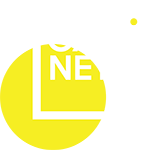- Tomasz Stępiński-Ustasiak
- 25 October 2020
- Articles
There are more and more IoT-based devices appearing every year. IoT Analytics reports that by the year 2025 there will be over 21 billion of them networked. Looking globally, that’s a lot. However, it does not look so rosy on the Polish market.
It should be remembered that, in forecasting the number of IoT devices worldwide, analytical companies take into account the mass market, B2B, and Industrial IoT, and the IoT share in the individual sectors of the economy may develop at different rates. And although the above forecasts may inspire optimism, and even representatives of the Polish government are increasingly talking about the importance of IoT-based solutions for the Polish economy, I personally believe that the Internet of Things in Poland is developing too slowly. Having been a regular participant in and a consultant on various types of IoT projects over the last few years, I have noticed several reasons blocking the development of processes based on this technology, especially at large enterprises, which generate the greatest demand for IoT solutions – companies serving cities and towns, supplying energy, water or other utilities necessary for urban homes to function properly. However, one of those reasons seems to be the most significant:
Lack of defined processes that enable decisions to be made based on data from IoT sensors
Let’s start from the observation that the implementation of IoT solutions allows you to derive knowledge from the data provided by various IoT sensors, be it is smart metering via smart meters, sensors built in machines in a production hall, or even intelligent lighting in cities, towns, office buildings or factories. Indeed, all those solutions are not worth implementing if, apart from the technologies themselves, they do not trigger changes in decision-making processes.
Take, for example, a large production hall in a factory, where most of the machines have been fitted with sensors. Information regarding their operational correctness and alarms indicating that something is wrong are sent to the e-mail box of the person responsible for the proper functioning of the hall. Only that latter element, i.e. the human factor, can determine what is to happen next.
That is, what – if any – processes will be launched. Everything works fairly well until there is a flood of alerts. Information chaos ensues, potentially causing losses. Conclusion: the implementation of IoT sensors did not help. Unfortunately, that is a misdiagnosis.
So what should a model implementation of IoT-based solutions look like at a large enterprise?
Along with the implementation of new IoT solutions, irrespective of their type (sensors in a factory, meters, intelligent lighting, etc.), it is also necessary to ensure that at the same time new operational processes are introduced, which will enable processing, analysis and reaction to the information obtained from the
technology implemented. In other words, two processes must be defined: the data consumption process and the decision-making process, which ends with a reaction (or no reaction) to the information obtained and occurrences detected.
Usually, IoT providers do not offer an IoT process consulting option. However, that is the only way to ensure a proper return on the investment and to enable reprogramming of an enterprise’s existing operation, based on the management of the information obtained. That is an essential part of the digital transformation of enterprises, a phenomenon which we have heard so much about in recent years. It can be said that the larger the organisation, the more difficult it is to correctly implement IoT into its structures and ensure a change in the business model. That may be one of the key reasons why large-scale smart metering has not yet been implemented in Poland, with most energy retailers having it only at the pilot stage. And there are many such examples,ranging from medium-sized production plants to large factories and even power plants.
IoT Consulting Necessary when Implementing IoT Solutions
At the moment, there is clearly no formula that will enable integration of IoT solutions with internal enterprise systems, such as ERP. In saying that, though, I do not mean just technological integration, because that is already achievable to some extent. Rather, the point is to be able to plan the analytical and then decision-making processes referred to above, knowing the specificity of a given enterprise. And that is why, for now, when deciding to implement the Internet of Things at an enterprise, it is worth turning to a provider (such as Gawinet) which specialises in IoT consulting. Having been presented with an organisation’s needs and expectations, IoT consultants will not only find some of the best technology suppliers, but will also plan and implement processes related to the interpretation of the provided data. Implemented in this way, a hybrid of IoT and internal company processes guarantees both a return on the investment and a reduction in operating costs, and, consequently, an increase in the profitability of the enterprise or its sector. And as with the implementation of telematics in large car fleets, here as well the benefits of an enterprise’s operational change to the “IoT Ready” model should be discussed with the management board, because such a conversion is clearly an intervention into the DNA of the firm. However, as is shown by the current pandemic situation, and the examples of technological transformation in such chains as Żabka, Eobuwie and even some banks, investment in technologies, and in this case in IoT, will not be just about a competitive advantage, but about the existential question facing many enterprises.
If companies offering IoT solutions for the medium and large enterprises sector pursued such an approach, we would certainly have more implementations of this type, and Poland would become a benchmark IoT market in the region.
